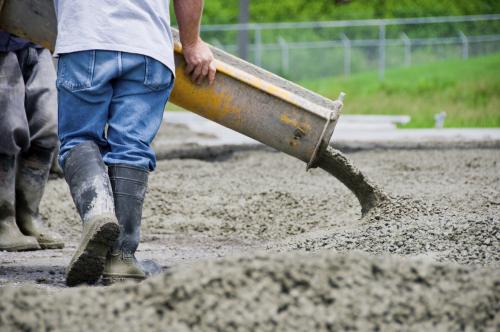Salient Features That Makes Concrete More Reliable for Construction

Concrete is a simple composite material, but its behavior is quite complex. With a view to achieving the final objective of producing quality concrete, it is essential to understand its various properties – both in the fresh and hardened states. Amongst these, there are three important properties namely, workability of fresh concrete, strength and durability of hardened concrete, which are of prime importance.
WORKABILITY OF CONCRETE
Workability is defined as the property determining the effort to manipulate a freshly-mixed quantity of concrete with a minimum loss of homogeneity.
The term workability covers the following range of properties :
• Mobility, that is, the ability of the concrete to move around the reinforcement and into restricted spaces.
• Compatibility by hand or vibration.
• Finish ability.
STRENGTH OF CONCRETE
Strength is the most commonly specified and tested property of hardened concrete. It is both a structural attribute and a measure of the progress of hydration.
Factors affecting Compressive Strength
The factors affecting compressive strength are briefly discussed below.
• Water-cement ratio : Abram's law correlating compressive strength of concrete and water-cement ratio is well known. This low implies that higher the water-cement ratio, lower the strength and vice-versa.
• Aggregates: Certain aggregate characteristics, such as size, shape, surface texture, grading and mineralogy are known to affect strength of concrete in varying degrees, independent of the change in water-cement ratio. For example: a change in the maximum size of aggregate can have two opposing effects on the strength of concrete. With the same cement content and consistency, concrete mixing containing larger aggregates require less mixing water than those containing smaller aggregates. On the other hand, larger aggregates tend to form weaker transition zones containing more micro cracks. The net effect will vary with the
water cement ratio and the applied stress.
• Air Entrainment : When air voids are incorporated into a concrete mix, either as a result of inadequate compaction or deliberately through the use of an air-entraining agent. They also have the effect of increasing the porosity and decreasing the strength of the mix. Although at a given water-cement ratio or cement content, the entrained air reduces the strength of concrete at very low cement contents it actually increases the strength.
DURABILITY OF CONCRETE
A durable concrete is one that is designed, constructed and maintained to perform satisfactorily in the envisaged environment for the specified service life of the structure without undue maintenance. The materials such as quality cement sand and granules and mix proportions chosen should be such as to maintain the integrity of concrete and to protect the embedded reinforcement.
IS 456 : 2000 identifies the following factors as influencing durability :
• environment
• cover to the embedded steel
• type and quantity of constituent materials
• cement content and water-cement ratio of concrete
• workmanship to obtain full compaction and efficient curing
• shape and size of members.
Advertise on APSense
This advertising space is available.
Post Your Ad Here
Post Your Ad Here
Comments